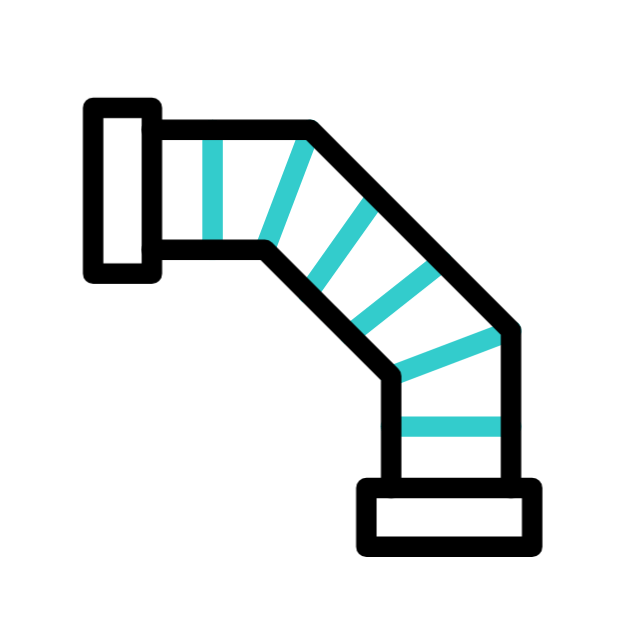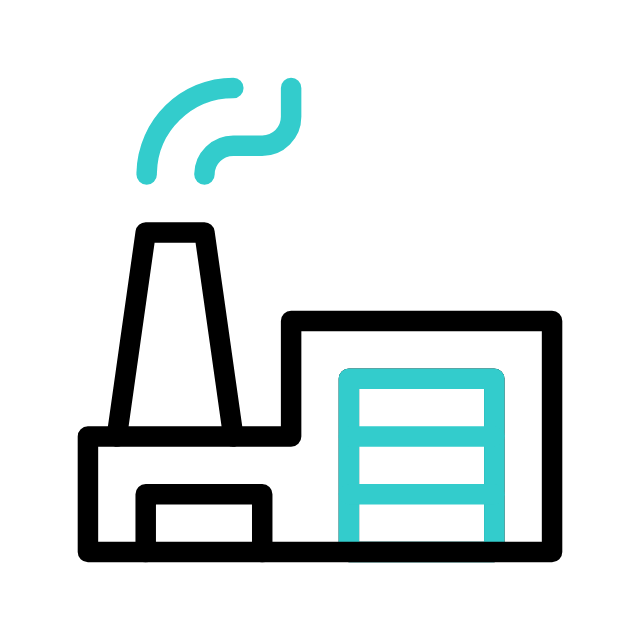Built by nature - and concrete!
The Openly building system
For new build and refurbishment projects.
Europe-wide.
The one-day training course at Openly.lab gives you free access to the building system documented under Openly.data.
Openly concept
-
The longer a building stands, the more sustainable it is.
Buildings should be planned in such a way that they have a useful life of 100 years or more and can be maintained sustainably. Who has ever thought of choosing a façade with a 30-year service life?
Openly relies on skeleton construction, i.e. as few load-bearing walls and as few installations in the floor as possible.
-
Everyone knows it: there is an enormous loss of knowledge in each of the 5 planning and realization phases. And nobody changes it.
Openly massively extends phase 2 (preliminary project). This allows highly accurate construction costs and thus the business case to be defined. On the other hand, the approval process can be started immediately.
The processes at Openly are designed to minimize the loss of knowledge. We achieve this through a high degree of standardization, known costs of components and involvement of executing companies.
-
The construction industry is responsible for around 25% of annual CO₂ emissions. In view of this challenge, OPENLY building owners are committed to significantly reducing emissions from new builds and refurbishments.
New discipline in architecture
The future of architecture lies in the development of buildings that are realized as far as possible with natural building materials and pursue a plus-energy focus.
Components with the lowest possible carbon footprint (avoidance of emissions)
materials are recyclable and are installed accordingly
And ideally CO₂ is stored long-term .
Material selection without bias
OPENLY has no material bias and is independent of the construction lobby. The selection of building materials is based exclusively on the principle of the greatest possible benefit for the environment and society.
Wood, concrete and steel should be used specifically where they offer the greatest added value.
Where these materials are not absolutely necessary, their use should be avoided.
-
Concrete is the fundamental building material and is indispensable for basements in particular. The Openly construction system consistently relies on massively CO2-reduced types of concrete (e.g. Progresso from VICAT) and CO2 removals using biochar from our partner CarstorCon.
Applicable worldwide.
-
Optimales Raumklima durch innovative Bauweise Gebäude von OPENLY engineered zeichnen sich durch hervorragende Isolationswerte (< 0,17) und eine hohe Speichermasse aus. Dadurch reagiert das Raumklima zeitlich verzögert auf äußere Temperaturschwankungen und bleibt stets angenehm.
Natural temperature equalization The heat stored in summer supports the heating of the rooms in winter. Conversely, the storage mass ensures pleasant coolness in summer. This means you benefit from a balanced indoor climate all year round.
Comparison with traditional stone houses The feeling of space is reminiscent of entering an old stone house in Tuscany on a hot summer's day - with the decisive advantage that OPENLY buildings remain pleasantly warm in winter.
Healthy building ecology and ideal air humidity The diffusion-open walls, for example made of hempcrete, ensure a constant air humidity of approx. 40% in winter. This promotes a healthy living climate and meets the highest ecological standards.
See for yourself Visit our pilot project "Valley Widnau" and experience the exceptional living and working environment on site!
Openly construction costs: 3000 CHF/EUR m2 GFA
-
Practiced and implemented sufficiency
Minimal building services, heating costs no more for an MFH than for a cottage.
Greatly reduced shading
approx. 25% windows on the façade
Minimal cellars and basements (mobility concepts, etc)
etc
-
Not everything is planned from scratch. Our serial hybrid timber construction is based on standards such as a 2.5 × 6.5 clay ceiling from a system supplier for 250 euros/m2. This fits on any truck and is cost-neutral compared to a conventional ceiling.
The same applies to prefabricated interior walls and an absolutely cost-neutral 45cm exterior wall made of hempcrete from www.cancret.com, which is manufactured locally by a local timber builder. No foils, no additional layers. Only the inside and outside are plastered on site. Et voila.
and best of all: the indoor climate is improved, the environment is protected and CO2 is stored.
-
The building system is open to all planners and architects. Not everything has to be planned and invented from scratch. We train the building system 5 times a year at the Opnely.Lab (one-day training) and then grant free access to the entire building system
We realize our own projects with our subsidiary architectural office(Valley Architekten AG). The efficiency from the volume study to the building application is impressive.
Furthermore, we only require greatly reduced specialist planner and engineering fees, especially with regard to the reduced building services.
-
Here are a few examples:
Catalog price clay building board /m2: 38
Purchase price from manufacturer: 17Catalog price 10cm cork insulation board/m2: 48
Purchase price from manufacturer: 29On the one hand, biogenic building materials in particular must be purchased in whole trucks and not in small quantities. On the other hand, you need to know how to put these components out to tender and what the finished component costs.
For example, with Cancret.com we can realize the 12 room partition wall for 110 CHF/Eur. Guaranteed.
The best way to order an apartment partition wall with clay building boards is from a timber builder.
etc.
As the purchase prices are known with the Openly construction system, a contractor quote can be obtained directly.
Openly Circulareconomy
-
If an OPENLY engineered building is to be converted or demolished, the planning focus is already on the demolition.
OPENLY constructions are therefore predominantly plugged or screwed together. This means that all components can be completely dismantled and removed.
-
The open load-bearing structure and the modular OPENLY standard dimensions allow flexible conversion of the buildings in the future. All walls can be removed without restriction and an OPENLY can be extended or added to as required.
This sophisticated system is particularly suitable for schools and daycare centers where teaching methods, class sizes and usage requirements are constantly changing. It also allows the needs-based expansion of school buildings in districts with rising birth rates.
In addition, an OPENLY can be dismantled and reassembled at a new location thanks to its fully bolted and plugged construction.
-
Some of the components in the OPENLY Valley Widnau project already come from re-use. The Swiss innovation leader in the circular economy, EBERHARD, has developed a database for reused iron carriers in collaboration with OEBU.
Around 30 tons of HEB and HEM steel girders were used for OPENLY Valley Widnau, around a third of which were re-used. These steel girders were previously installed in buildings or excavations and are now being reused.
The steel beams act as modular elements in timber box girder ceilings filled with clay. This combination allows the materials to be used where they can optimally develop their respective strengths. This leads to savings in timber and enables jointless and beamless timber ceilings without additional underlays or overlays.
When planning OPENLY Valley, further re-use potential was also taken into account: For example, 400 tons of clay, 1 kilometer of copper pipes and 300 cubic meters of wooden beams can be reused directly in other projects without further processing.
Our carbon footprint takes all relevant factors into account - from transportation from the EBERHARD warehouse to assembly on site. Thanks to the extensive use of Re-Use, we achieve an almost CO2-neutral construction method.
This approach is in line with our holistic carbon management and actively supports the achievement of net zero targets through the use of biogenic building materials and sustainable negative emission technologies.
-
With the OPENLY construction system, there is a particular focus on recycling the remaining components. High-quality materials retain their value even after the end of their useful life. These include, for example, raw materials from solar cells, glass, hemp fibers, copper, iron and steel. Recycling these materials makes a sustainable contribution to resource management.
Openly PlusEnergy house
-
A central component of every OPENLY engineered HVAC planning is the connection of the systems via Modbus to ensure optimum energy management.
One of these control and integration software packages is EISBÄR SCADA. However, there are a large number of providers. It is important that all devices are ModBUS-capable and that their interfaces are enabled by the manufacturers.
-
Solar panels on 95 percent of roof surfaces are almost indispensable for new build and renovation projects. In addition to the ecological benefits, they represent an economically attractive business case, particularly in view of rising energy costs.
As a rule, the available roof area generates enough energy to achieve the PlusEnergy standard.
The calculation is clear: a solar system in Central Europe produces an average of around 200 kilowatt hours per square meter per year. The energy yield is higher in southern Europe and correspondingly lower in the north. This amount is roughly equivalent to the annual electricity consumption of a dishwasher.
Thanks to the excellent building physics, an OPENLY building only requires around 10 watts per square meter for heating, which makes it much easier to create a PlusEnergy house. Further details on building physics can be found in the corresponding chapters on this website.
-
As the electricity is generated by the house's own photovoltaic system, the use of an electrically powered heat pump makes particular sense.
The choice of energy source, such as geothermal probe, ground baskets, seawater or air, has a significant influence on the efficiency of the heat pump. Depending on the system and time of year, a heat pump achieves a coefficient of performance (COP) of between 2 and 4. In summer, this can even be as high as 6 for air heat pumps.
In simple terms, this means One kilowatt hour (kWh) of electricity fed into the grid can generate around 2 to 4 kilowatt hours of thermal energy.
In addition, the integration of storage systems, such as water tanks, allows heat to be stored and used efficiently when surplus energy is available - on sunny days, for example.
Furthermore, the heat pump should be operated during the day if possible in order to use the PV electricity.
-
The heating energy requirement for an OPENLY engineered building is around 10 watts per square meter. This very low value opens up a wide range of possibilities for the provision of heating energy in the building.
Classic systems such as radiators or underfloor heating can be used as well as alternative solutions such as infrared panels (where permitted) or innovative tiled stoves. The aim is always to keep the building technology as simple as possible in order to avoid high costs, maintenance costs and limited service life of the installations.
Cooling in summer is an increasingly important aspect. Architectural measures for sun protection should be prioritized here. The use of air conditioning systems or underfloor cooling is only recommended as a secondary consideration. OPENLY buildings provide sufficient energy in summer through their solar systems to operate such systems efficiently.
-
In Central Europe, residential buildings often consume more energy for heating water than for heating in winter.
Instead of a conventional boiler, OPENLY uses a central fresh water station with storage tank, which is operated by a heat pump. The hot water is produced on demand and directly at the point of use, ensuring consistently high water quality.
The showers integrated into the prefabricated wet rooms from Dade Design use a closed, decentralized system based on Joulia technology, thereby saving around 30 percent energy.
OPENLY Valley Widnau goes one step further: all wet rooms are prefabricated and installed as complete elements in the timber construction. If the floor plan is changed at a later date, these wet rooms can be easily moved using a pallet trolley.
-
Energy storage comprises two central aspects:
A) Seasonal storage for overproduction in summer and demand in winter (currently still unresolved)
B) Day and night storage
An efficient approach to energy storage is to use surplus solar energy to heat storage water for heating and hot water during the day - in contrast to the previous practice of heating these storage tanks at night with cheap nuclear power.
For short-term storage, we rely on a battery system that is connected to the hybrid inverter of the photovoltaic system and also offers emergency power capability. The Valley Widnau pilot project is practically self-sufficient from March to October.
At around 500 euros per kilowatt hour, the current costs for home batteries are still too high. In the future, electric vehicles are expected to be used as overnight battery storage. We therefore currently recommend cautious investment in home batteries.
In the area of seasonal storage, we intensively examined hydrogen (H2) but rejected it due to a lack of financially and technically feasible solutions in the context of apartment buildings. Compressed air or spring storage could be considered as alternatives.
Energy storage always requires a certain amount of space. That is why we at OPENLY attach particular importance to planning spacious technical rooms so that future storage solutions can be easily integrated.
Openly Investment
-
Timber construction and sustainable building are often associated with higher construction costs. However, openly engineered buildings offer a high degree of cost certainty. We are aiming for construction costs of CHF 1000 per cubic meter or CHF 3000 per square meter of gross floor area (in Germany, the costs are around EUR 900 per cubic meter).
It should be noted that the building materials are somewhat more cost-intensive than in conventional buildings. On the other hand, there are no costs for complex building services installations and higher planning fees, as tried and tested solutions are reused and not every project has to be developed from scratch.
In addition, CO2 certificates for biogenic building materials support monetization and contribute to economic efficiency. It goes without saying that Openly engineered buildings meet the highest funding criteria of the Quality Certificate for Sustainable Buildings (QNG), for example KfW40 standards.
-
The extremely low energy consumption and the sustainable construction method dramatically reduce ancillary costs, which means a significant increase in net rents. The condominium owners of the Valley Widnau pilot project pay CHF 200 per month for a 4.5 room apartment (all-in).
-
Timber construction requires architects and specialist planners to fully plan the building before construction begins. Thanks to the prefabrication of the construction elements, OPENLY's engineered buildings are usually built in less than a year. Supplementary systems such as dry screed and prefabricated wet cells also help to speed up the construction process.
The current BKP structure and standard tenders do not yet take sufficient account of the rapid and coordinated construction process. The faster a building is constructed, the more cost-efficient the project is and the less reliant it is on skilled workers on the construction site.
-
Wet rooms can be prefabricated as an option(see Dade Design). A lot of (construction) time can be saved and valuable planning time can be used elsewhere.
-
OPENLY has three focus areas in this field:
(1): Reduced building services: Installation of as little building services as possible. For example, OPENLY partially dispenses with shading due to the terrace towers or ventilation pipes (Minergie).
(2): Large technology rooms: The reason for this is simple: today it is impossible to reliably predict which technologies and energy storage systems will be available in ten years' time. We often compare today's buildings with a floppy disk - outdated and limited in capacity. Future innovations in the field of energy and building technology will be groundbreaking. However, energy storage always requires sufficient space, which is why spacious technical rooms will be necessary in the long term.
3 Accessible riser zones
In order to install new technology, the riser zones must be accessible. Today, however, these are planned and designed (in residential construction) in such a way that it is only possible to adapt them with enormous effort.














